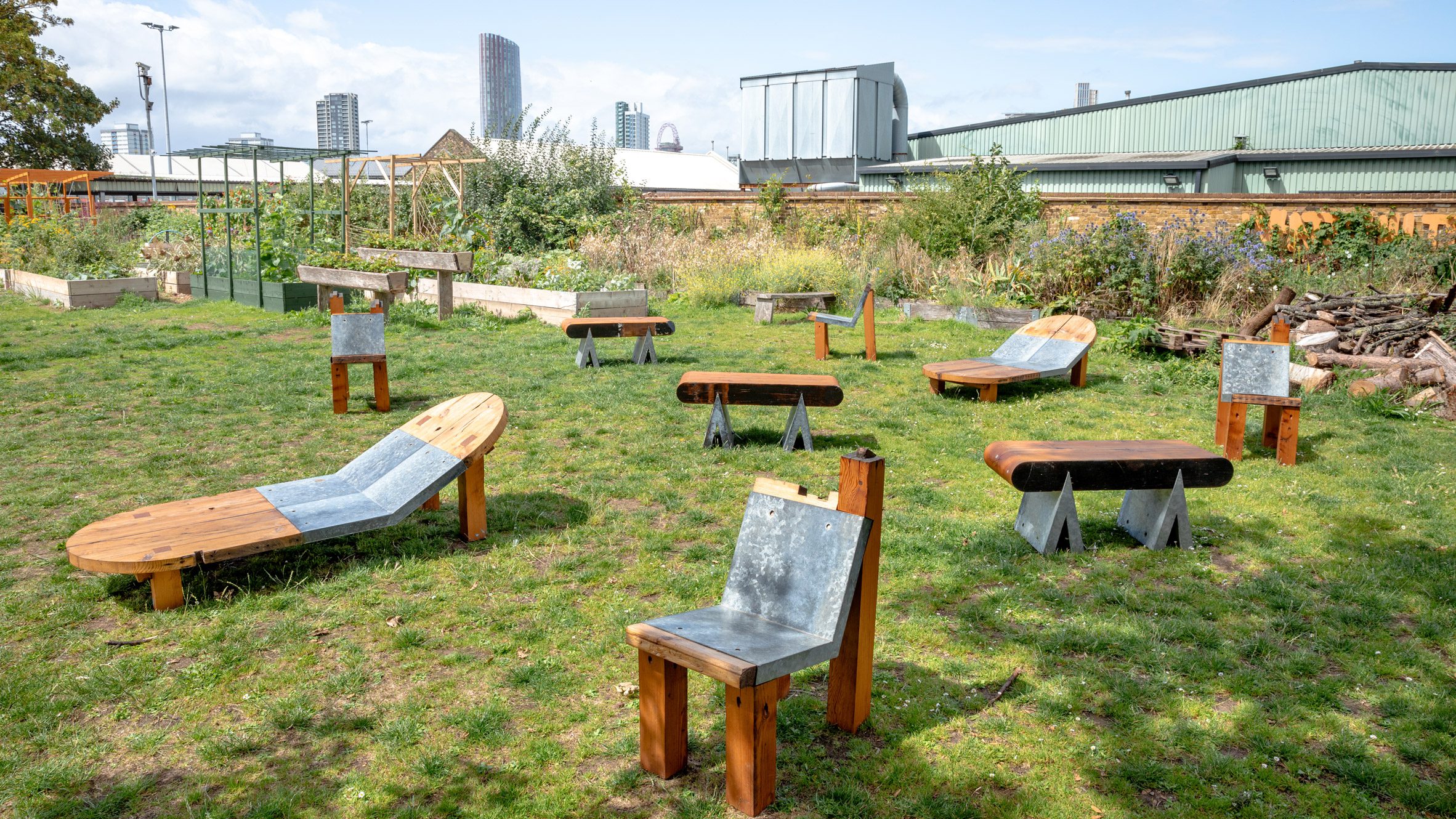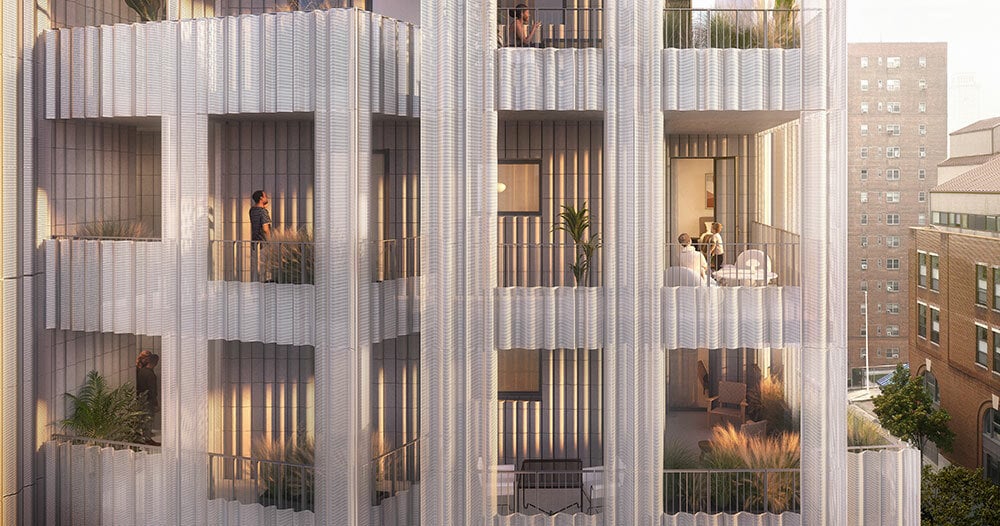
Perforated sheet metal: filtered light generating iridescence
Image courtesy by SO- IL
Three-dimensional surfaces and textures are used in architecture and interior design to add depth and movement, increasing the visual interest of buildings and constructions.
Honeycomb textures, grooved surfaces, perforated or woven walls are all design gimmicks that, by exploiting the interaction with light and the filtering of sunlight, generate iridescent effects by enriching the user experience and giving dynamism to architectural spaces.
One solution that lends itself well to this function is perforated sheet metal, a metal material that has small holes regularly distributed on its surface. When light passes through these holes, in fact, it can generate iridescent effects because the holes can act as small lenses or prisms that separate the light into colored components.
In essence, perforated sheet metal can transform incident light into a range of iridescent colors, giving the surface a visually interesting and dynamic appearance.
Several factors can influence this phenomenon: the size and shape of the holes, the presence or absence of surface treatments, and the angle from which light strikes the drilled surface.
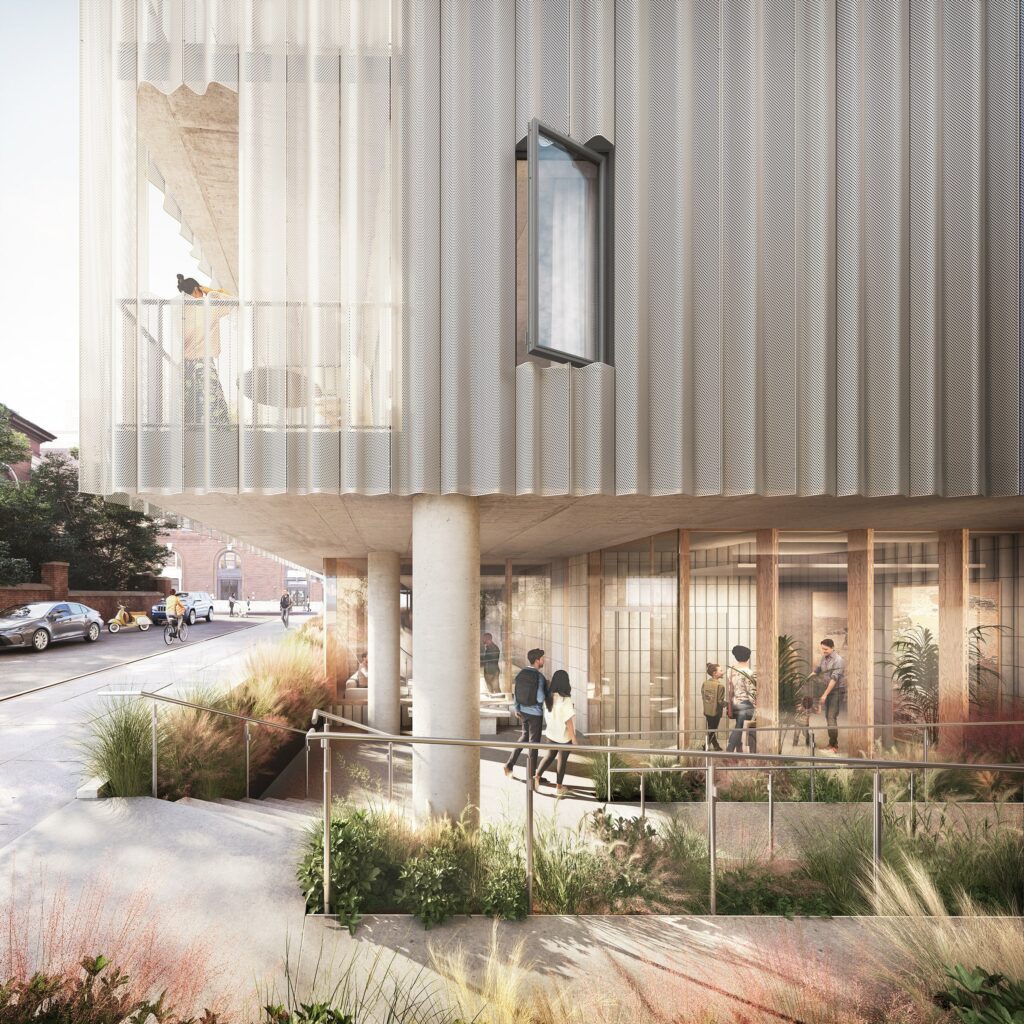
The use of perforated sheet metal for a building façade is useful for creating an interesting combination of privacy and transparency, as well as giving it a dynamic appearance that varies with the viewing angle.
Such is the case with the Nine Chapel building in downtown Brooklyn, signed by the architectural firm SO – IL together with the development company Tankhouse. It is a 14-story freestanding condominium tower in which residences are carefully designed to provide both private and public outdoor spaces. The structure is wrapped in an undulating skin of perforated light metal, which allows for different experiences depending on the angle from which it is viewed and the time of day. In fact, the sun’s rays are filtered, giving the facade an iridescent appearance. Depending on the weather conditions or time of day, the building can disappear into the sky, glow with pearlescent hues or reflect the fiery sunset. Inside, bright and spacious residences also benefit from the reflectivity and permeability of the veiled facade, which provides privacy without obstructing the passage of light and air.
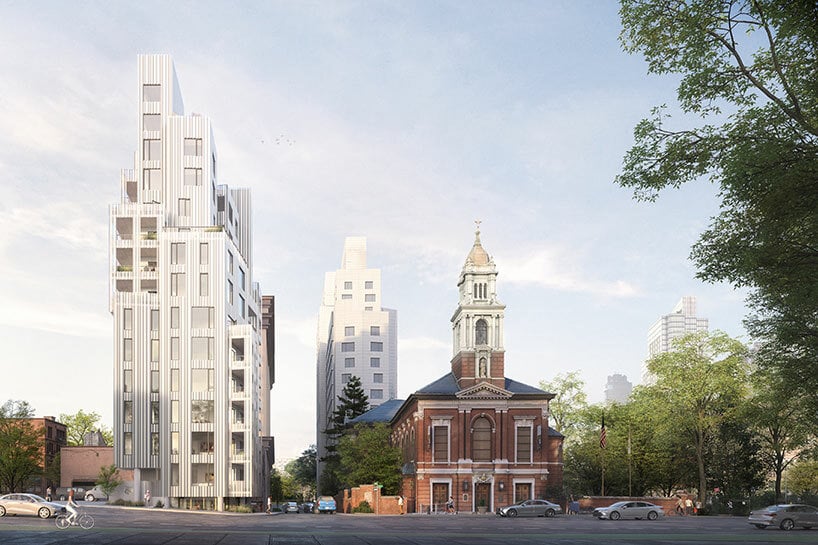
Another recent example in which the use of perforated sheet metal is evident is the building called Shanghai Book City, designed by local studio Wutopia Lab. The facade of the bookshop is wrapped in perforated aluminum panels behind which a lighting system is hidden which, using the holes in the sheet metal, generates designs and patterns on the surface. The facade thus appears to have an iridescent and dynamic appearance, which changes depending on the angle from which it is observed, and which contributes to making the building recognizable in its context.
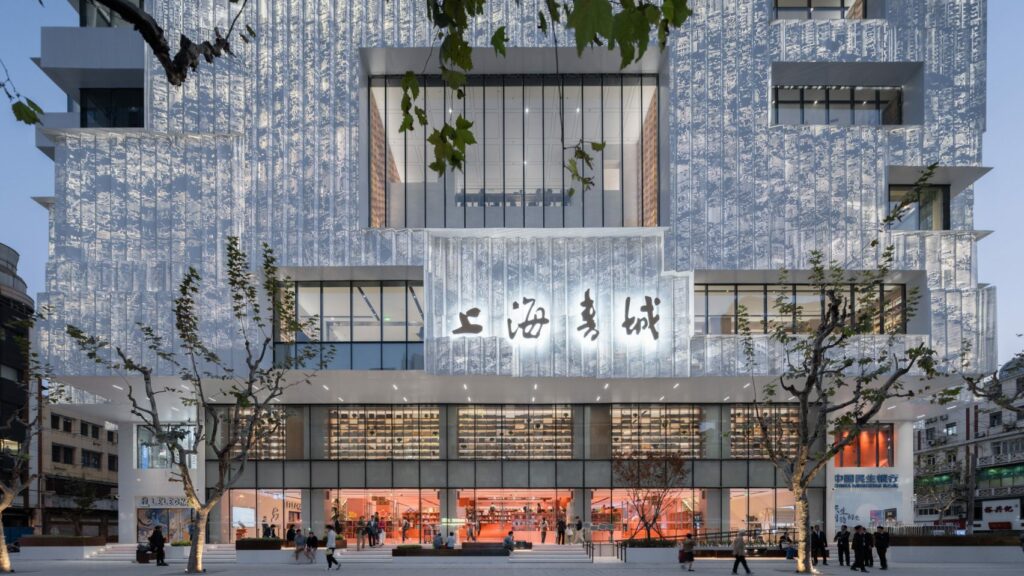
Do you want to be up-to-date on the latest trends and news about your industry?
Subscribe to Material ConneXion Materials Insights. Browse contents and reports on innovative materials in The Stacks platform, and access the Materials Library database with its 10,000+ innovative materials from manufacturers around the world. Write us.

